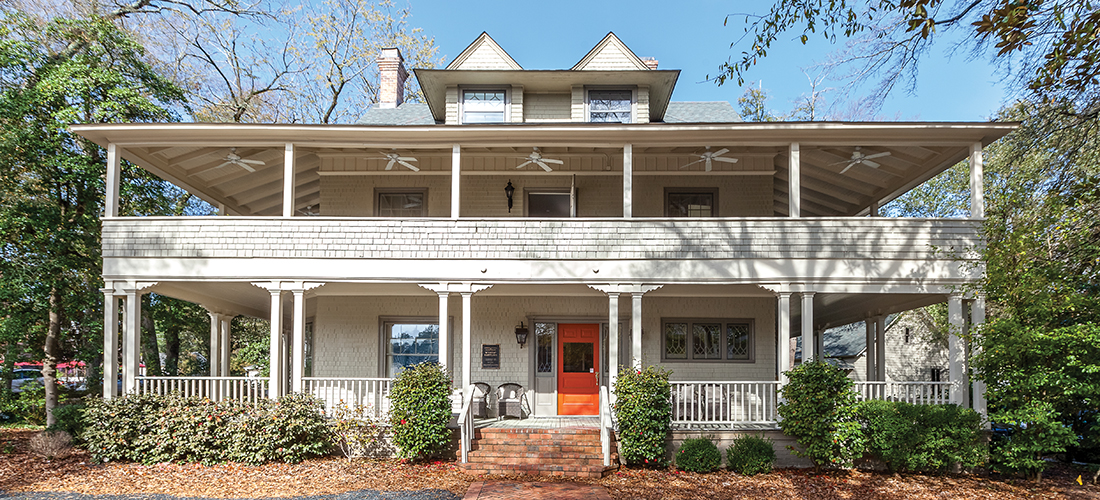
Letting a house speak for itself
By Deborah Salomon • Photographs by John Gessner and from The Tufts Archives
If only the walls could talk.
We can.
We walls surround a house now surrounded by others that once stood alone in an infant village with muddy roads and big dreams — a village which, as founder James Tufts wrote, “would attract only a refined and intelligent class of people.” Our double-decker wraparound porches were meant for sitting and watching . . . very little, at the start. Today, the world strolls by. Music and aromas fill the air. Porch chairs are occupied by progeny hungry for history.
We walls, some plaster, formerly white, now sport a rainbow of blues: blue and grey and grey-blue and teal and almost turquoise; some of us old walls remain covered in grasscloth, also painted blue. No amount of scraping, stain or polish disguises our heart pine floorboards — although carpets and rugs of all sizes, shapes, colors and provenance draw attention to their antiquity with this exception: Flooring in the back hallway comes from a longleaf pine felled recently by lightning on Pinehurst No. 2.
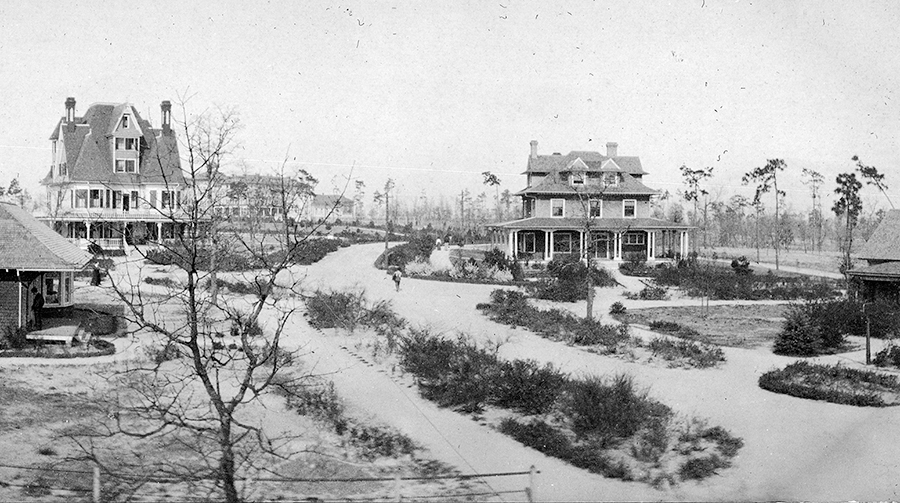
Our exterior shingles, once white also, are a misty gray reminiscent of haze over the Mystic River, which flowed near the Tufts residence in Massachusetts. Nobody knows why the door blazes burnt orange.
James Tufts built our Mystic in 1899 for his son Leonard who, after his father’s death in 1902, moved his growing family to Pinehurst and took over resort operations. What a mansion it was — 14 rooms, vaguely Queen Anne, designed by the same Boston architects as the Carolina Hotel. The Pinehurst Outlook described Mystic as “having steam heat, throughout with electric lights, a large steel range and cold storage for preservation of meats and vegetables.” The second floor bathroom was “fitted with the latest improvements such as sanitary plumbing, a porcelain bath tub and one set of bowls.” Also: Antique oak furniture and “rich Brussels carpets.” The Outlook further commented: “Nothing has been left to be desired. Mystic Cottage has a home-like appearance notably lacking in homes located in other winter resorts.”
Palm Beach, perhaps?
After Tufts moved across the street to Mistletoe Cottage in 1913, we were occupied by, among others, Mr. and Mrs. Robert Hunter, of Berkeley, California. Mr. Hunter, described as a cranky socialist and writer, took issue with Tufts over heating bills. “You charge the extreme limit for every service you render to the people of Pinehurst. You have driven away a large number of people . . .”
But not the lady ghost, rumored to be a lovelorn poet.
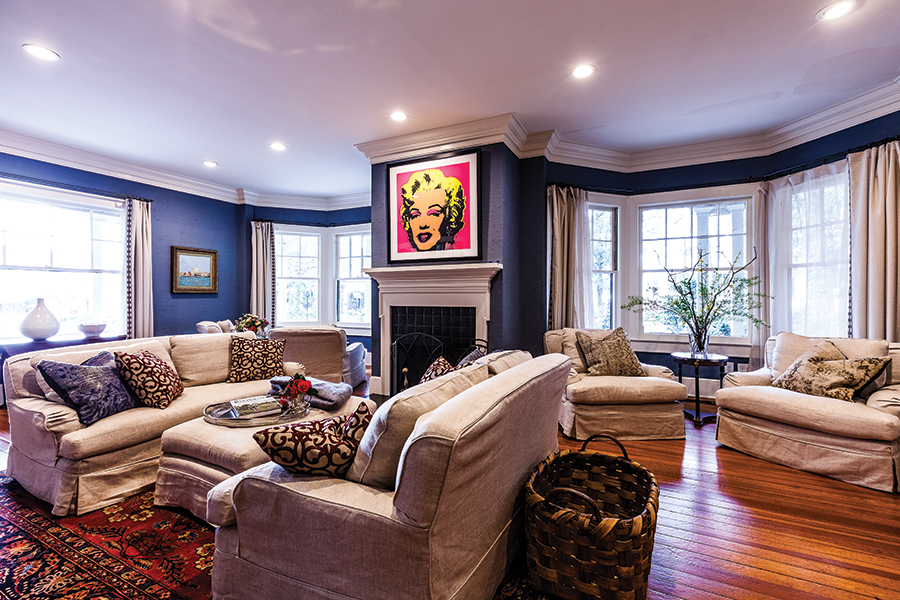
Nevertheless, the resort continued to grow, to prosper, and we continued to adapt. Our walls were reconfigured into apartments, offices, a bank branch and finally, Brenda Lyne’s home décor business. Lyne installed an elevator which, though convenient, seems anachronistic to us.
Then, in 2013, not without contention, Mystic was rezoned residential and sold to Richard Moore, CEO of First Bank, and his wife, Noel — definitely “intelligent and of refined tastes.”
The walls fall silent as another voice emerges.
“I fell in love the first time I went through (Mystic Cottage) when it was still a store,” Moore says. First Bank was moving headquarters from Troy to Southern Pines. He needed a place to stay during the week. He was also a Wake Forest history major, who had rebirthed Ashburn Hall, a 19th century meeting venue near Oxford.
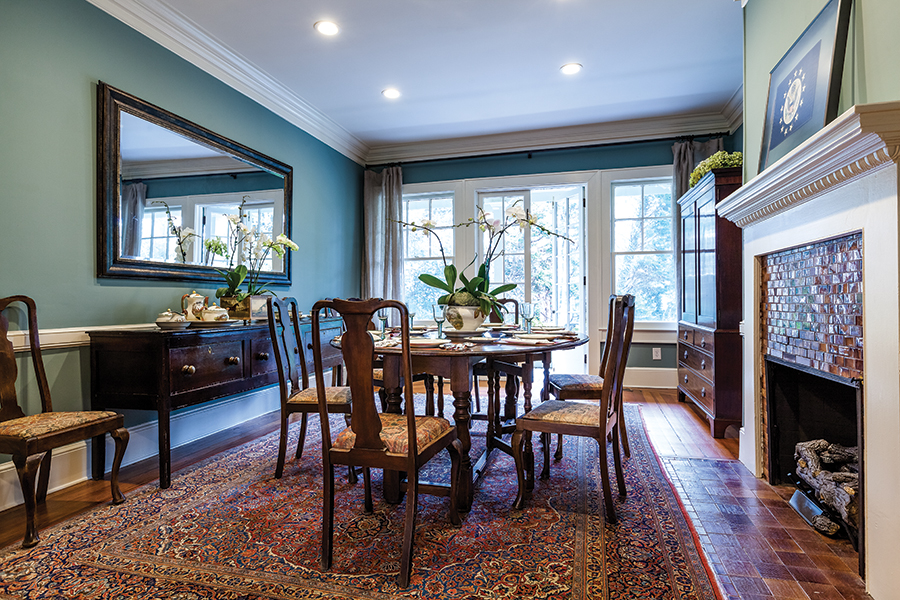
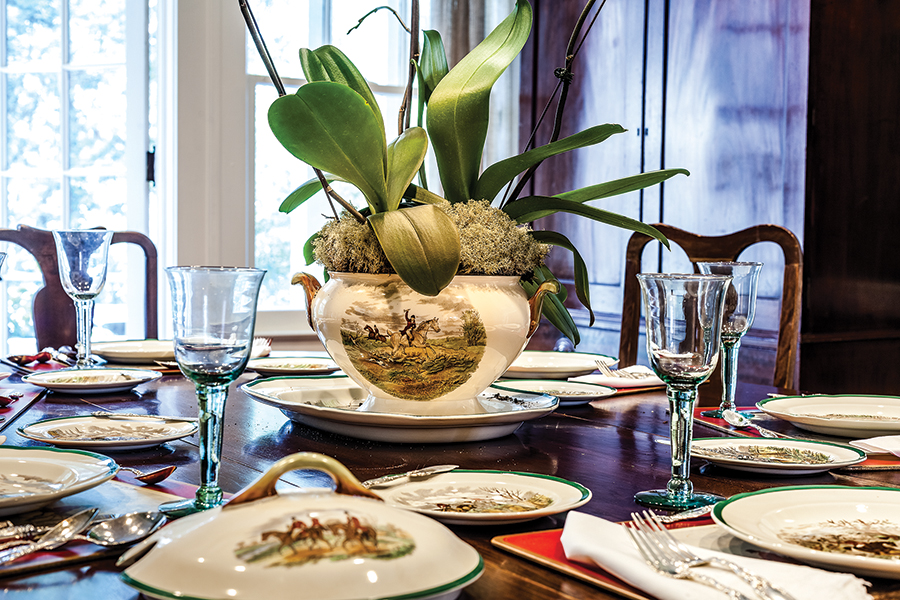
But, the ever-practical walls query, why live on a busy village corner instead of a quiet cul-de-sac?
“I wouldn’t have picked downtown except for this house. I was happy to put money into a landmark that would be connected to First Bank,” Moore answers.
Banker-turned-rehabilitator Moore accomplished the redesign sans architect, quite the feat considering the scope of his plans.
“There’s practically nothing original on the inside — two fireplaces, one door,” also a darling wood-paneled dormered nest on the third floor, presumably the maid’s quarters. “I tried to be creative in where we put the bathrooms,” he adds, recalling the Tuftses and their three children had one and the Moores desired six.
Or is it seven?
No matter. Their vanities — repurposed antique bureaus — make the loos as elegant as the parlors.
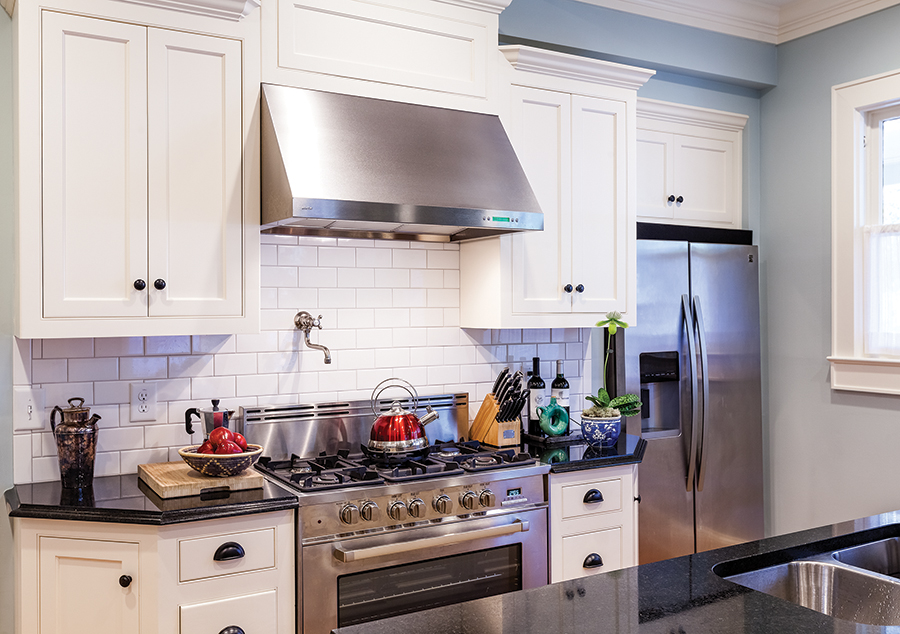
What Moore accomplished was a maze of sitting areas (“so everyone could have their own space”), bedrooms (none vast), recreation (billiard room, TV nooks) and a kitchen, which, in an era of culinary ballrooms, illustrates restraint. “There was no kitchen; I just took a guess.” From the coffered ceiling — which Moore devised as a “strong statement” — to the painted cabinets and breakfast room with round table and pub chairs, Moore has created a contemporary kitchen shadowing the bygone.
Just imagine, in a renovation costing many zeros, no Sub-Zero!
“I went with Sears,” Moore says.
The walls’ primary purpose, aside from loquaciousness and connecting miles of moldings, is backdropping an art collection that would wow even persnickety James Tufts. Furnishings, none heirlooms, blend in; upholstery has been kept neutral lest patterns detract from paintings. Art of multiple spectra is the Moores’ passion, if not trademark. Above the living room fireplace hangs, of all things, an original Marilyn Monroe by Andy Warhol.
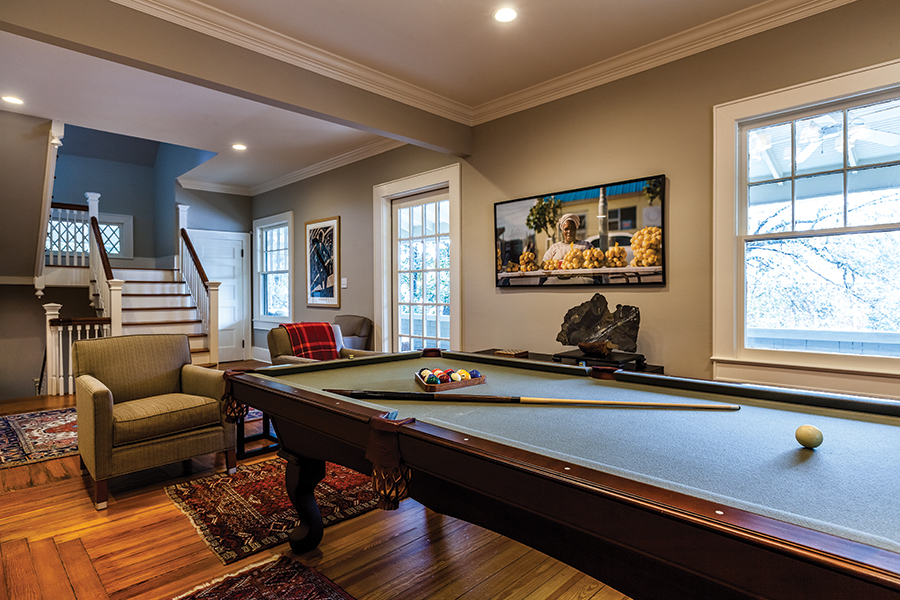
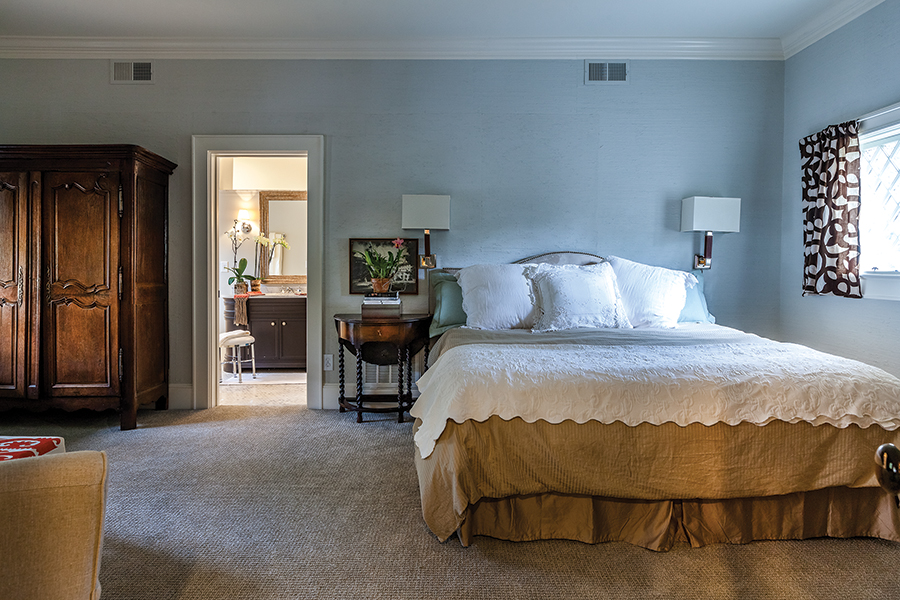
“When my wife walked through the house she said, ‘You need Marilyn there.’ So she bought one for me.” Even walls that stare at nothing else have trouble describing gilt-framed English landscapes by Duncan Cameron and American masterpieces by Impressionist/Expressionist Jane Peterson, also Dale Nichols, in the style of Grant Wood. Yes, that is pop artist Roy Lichtenstein, also, and a Toulouse-Lautrec print, but the enlarged photos were taken by the Moores’ son, William, when he worked for the United Nations.
Times, they have a-changed. Our chatty walls must learn a new script. Or amend the old one. Because once again, Mystic Cottage hosts a family of substance and taste, who appreciate both history and now-time. Other cottages may crowd its perimeter, but the interior still boasts “the latest improvements,” more likely zoned AC and Wi-Fi than electric lights. Of an evening, Richard Moore watches the world James Tufts sought to attract go by from a porch where Leonard’s children played on rainy days.
Whither the ghost? She hasn’t been seen for years. Just as well. Marilyn might scare her to death. PS
Southern Pines Home & Garden Tour
Mystic Cottage and five other premier area homes will be on display at the 69th annual Southern Pines Home & Garden Tour, from 10 a.m. to 4 p.m. on April 8. For the first time, the tour will take place on Saturday. Also included, the public gardens at Weymouth, Campbell House and Sandhills Horticultural Gardens. An exhibit of original watercolor landscapes will be on display at Campbell House. Tickets are $20 until April 5 at Campbell House and The Country Bookshop in Southern Pines, and The Woman’s Exchange in Pinehurst, or at www.southernpinesgardenclub.com. Day of tour, tickets may be purchased for $25 at the houses. Profits from garden club events fund scholarships and beautification projects.





